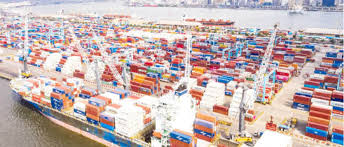Impact Of New Tariffs On U.S.-China Trade: An Unfolding Crisis
by Beady Nnanna ·
American importers are currently grappling with a challenging landscape due to the recent decision by the White House to impose a staggering 145 percent tariff on Chinese goods. This steep increase is prompting many U.S. firms to delay or outright cancel their orders from China, with some even contemplating abandoning cargo at the docks. While the White House has promised exemptions for goods already in transit, uncertainty looms large over the future of U.S.-China trade relations.
A Cascading Effect: The Ripple of Increased Costs
Prior to this latest hike, Chinese manufacturers were already dealing with a 20 percent tariff from earlier actions by the U.S. government, compelling them to reduce prices significantly to remain competitive. As toy factory owner Chen Qingxin aptly noted, “It is a deal breaker. No room for doing business anymore, for both sides.” The effective doubling of wholesale costs has catalyzed a wave of cancellations among American retailers. E-commerce titan Amazon has already begun to revoke orders, with canceled shipments of summer goods like air conditioners and beach chairs—a clear indicator of the acute disruption in the supply chain.
Exporters in China are adjusting to this grim reality; many report that all factory orders are being suspended. One manufacturing executive shared that “any goods that have not been loaded will be cancelled, and goods that are already at sea will be re-priced.” Compounding the issue, some American clients have indicated they may abandon goods upon arrival because the tariffs render them unsellable.
Financial Strain on Importers
The financial instability among importers is palpable. Supply chain consultant Joseph Esteves pointed out that a major trend is the reluctance of shippers to accept freight, particularly as many companies do not have the working capital required to absorb the tariff costs. “They simply cannot just take on this [tariff] and hope to see what happens.” This reality is forcing U.S. importers to rethink their supply chains, turning their attention to alternatives like Cambodia and Vietnam as part of a “China plus one” strategy.
Despite these shifts, experts suggest that it is unlikely for low-end consumer goods to be manufactured in the U.S. anytime soon. Casey Barnett, president of the American Chamber of Commerce in Cambodia, emphasized, “They’re not going to go back to the United States. I can’t imagine that Americans want to sit down and sew a pair of sweatpants for long hours of the day.”
Retaliation and Broader Economic Implications
The ramifications of these tariffs extend beyond importers. In a tit-for-tat response, China has implemented its own retaliatory tariff of 84 percent on U.S. goods, significantly affecting agricultural interests, particularly U.S. soybean farmers. Furthermore, manufacturers in the U.S. are already feeling the slowdown; Haas Automation, a leading maker of CNC industrial machine tools, recently announced they are scaling back hiring and production due to a “dramatic decrease in demand for our machine tools from both domestic and foreign customers.”
Conclusion
This unfolding crisis highlights the fragility of global supply chains and the deep interconnections between U.S. and Chinese economies. As tariff skies darken, American importers, retailers, and manufacturers face critical decisions that could reshape the future of trade. Ultimately, the ability of U.S. firms to navigate this turbulence will determine not only their survival but also the broader economic implications for both countries. As we look ahead, adaptability and strategic foresight will be more important than ever in this new era of trade relations.



